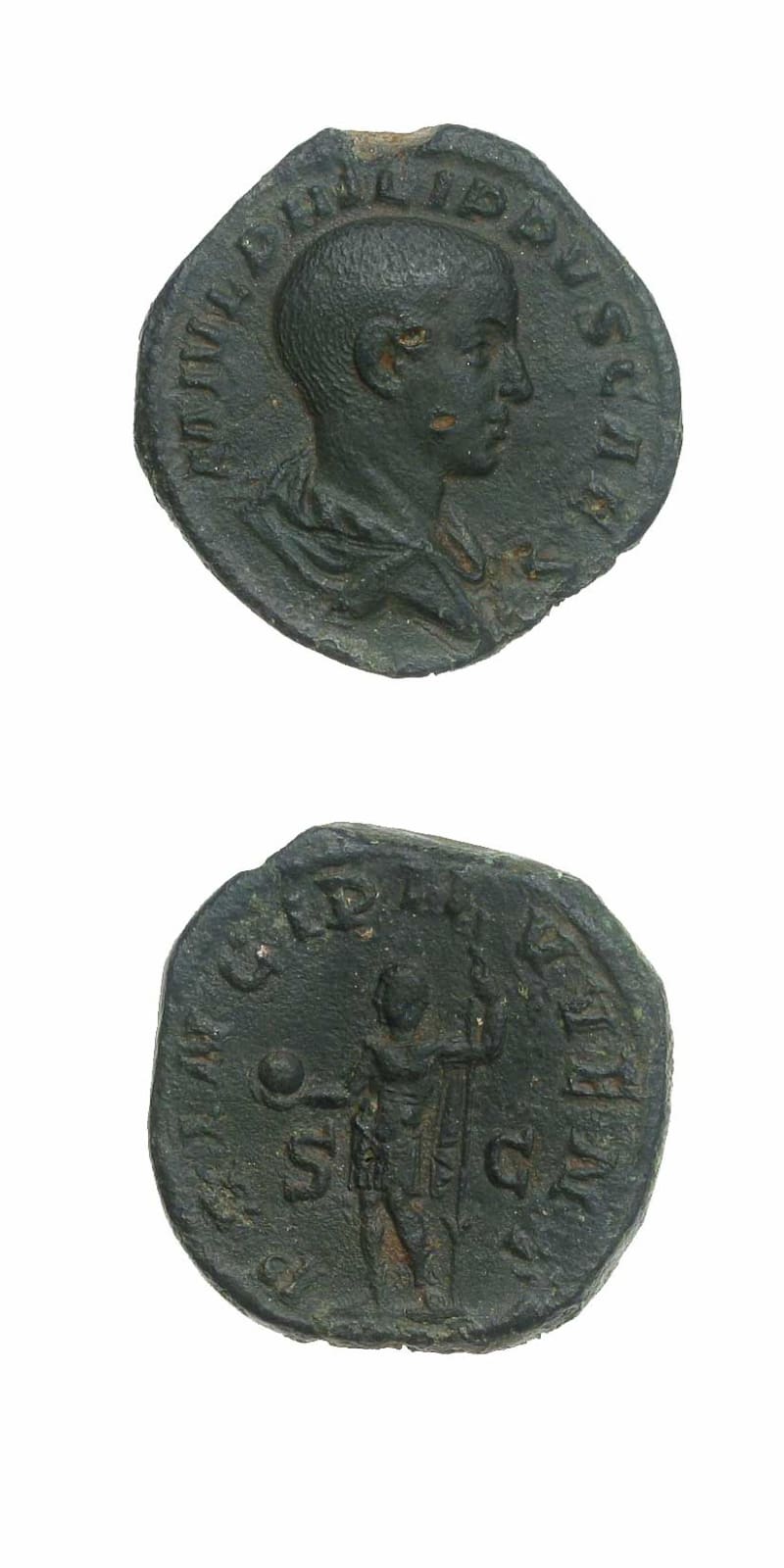Bronze Sestertius of Philip II Struck While Caesar, 244 CE - 247 CE
Bronze
C.6987
Obverse: M IVL PHILIPPVS CAES; Draped and Cuirassed Bust of Philip II Facing Right Reverse: PRINCIPI IVVENTVTIS S C; Philip II, Standing to the Left, Wearing Military Garb, Holding a...
Obverse: M IVL PHILIPPVS CAES; Draped and Cuirassed Bust of Philip II Facing Right
Reverse: PRINCIPI IVVENTVTIS S C; Philip II, Standing to the Left, Wearing Military Garb, Holding a Globe and a Sceptr
Philip II was the son of Emperor Philip I “the Arab” and his wife Otacilia Severa. He was seven years old when his father became emperor. In 247 A.D., he was elevated to Augustus along with his father. When Philip was killed in battle with Trajan Decius, Philip II distributed bonuses to the troops and money to the citizens of Rome to celebrate his accession to the throne as sole ruler. This generosity did him no good, however, because the Praetorian Guard killed Philip II sometime in the fall of 249. For some reason, many of the coins of Philip II are graced with beautiful portraits and exquisite artwork on the reverse. Though he was only a minor Caesar and emperor, his coins are highly sought because of their beauty, especially the provincial issues.
How many hands have touched a coin in your pocket or your purse? What eras and lands have the coin traversed on its journey into our possession? As we reach into our pockets to pull out some change, we rarely hesitate to think of who touched the coin before us, or where the coin will venture to after us. More than money, coins are a symbol of the state that struck them, of a specific time and place, whether currency in the age we live or an artifact of a long forgotten empire. This stunning hand-struck coin reveals an expertise of craftsmanship and intricate sculptural detail that is often lacking in contemporary machine-made currencies. This coin is more than an artifact; it is a shining vestige of an ancient Emperor passed from the hands of civilization to civilization, from generation to generation.
Reverse: PRINCIPI IVVENTVTIS S C; Philip II, Standing to the Left, Wearing Military Garb, Holding a Globe and a Sceptr
Philip II was the son of Emperor Philip I “the Arab” and his wife Otacilia Severa. He was seven years old when his father became emperor. In 247 A.D., he was elevated to Augustus along with his father. When Philip was killed in battle with Trajan Decius, Philip II distributed bonuses to the troops and money to the citizens of Rome to celebrate his accession to the throne as sole ruler. This generosity did him no good, however, because the Praetorian Guard killed Philip II sometime in the fall of 249. For some reason, many of the coins of Philip II are graced with beautiful portraits and exquisite artwork on the reverse. Though he was only a minor Caesar and emperor, his coins are highly sought because of their beauty, especially the provincial issues.
How many hands have touched a coin in your pocket or your purse? What eras and lands have the coin traversed on its journey into our possession? As we reach into our pockets to pull out some change, we rarely hesitate to think of who touched the coin before us, or where the coin will venture to after us. More than money, coins are a symbol of the state that struck them, of a specific time and place, whether currency in the age we live or an artifact of a long forgotten empire. This stunning hand-struck coin reveals an expertise of craftsmanship and intricate sculptural detail that is often lacking in contemporary machine-made currencies. This coin is more than an artifact; it is a shining vestige of an ancient Emperor passed from the hands of civilization to civilization, from generation to generation.



